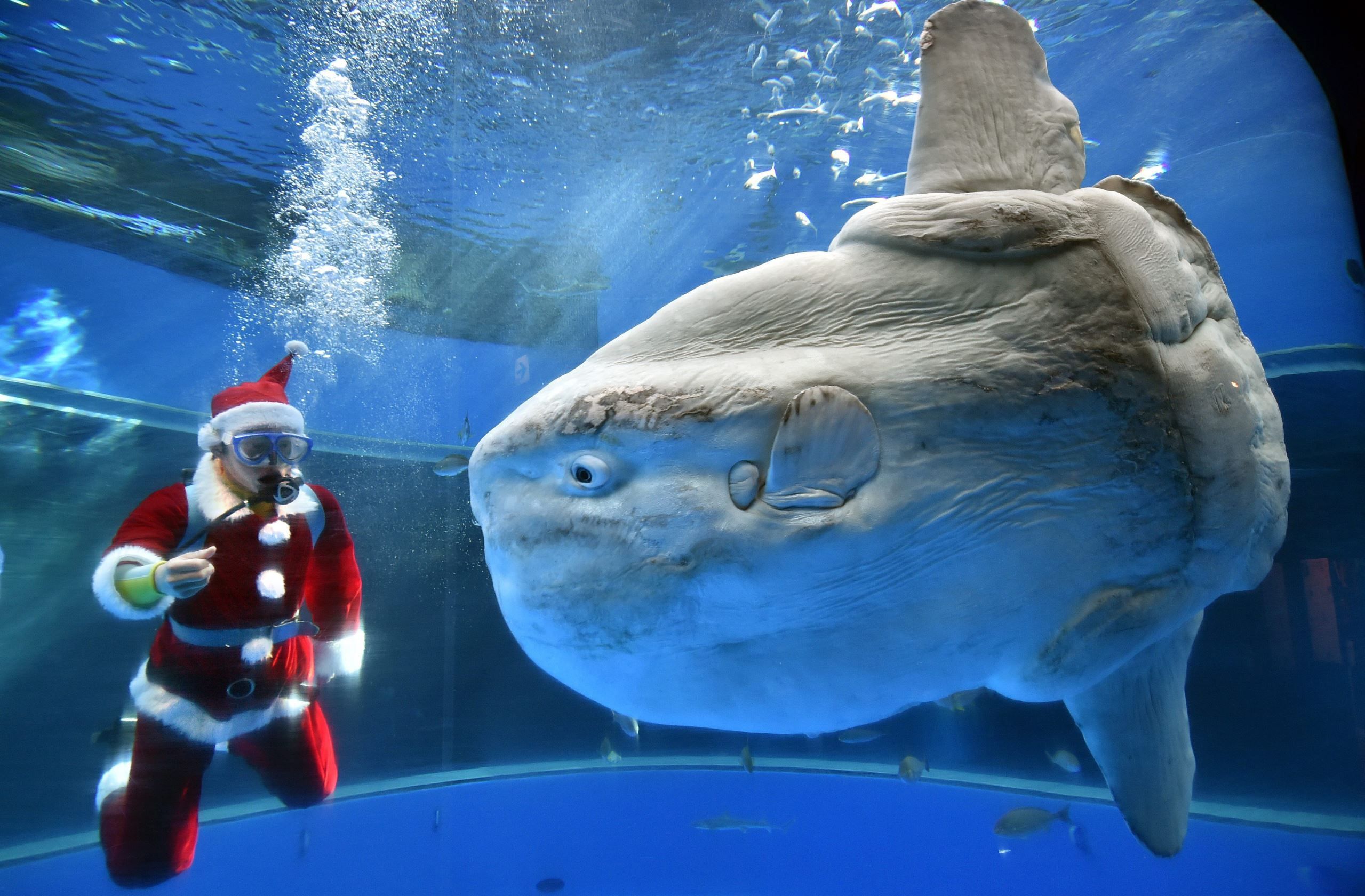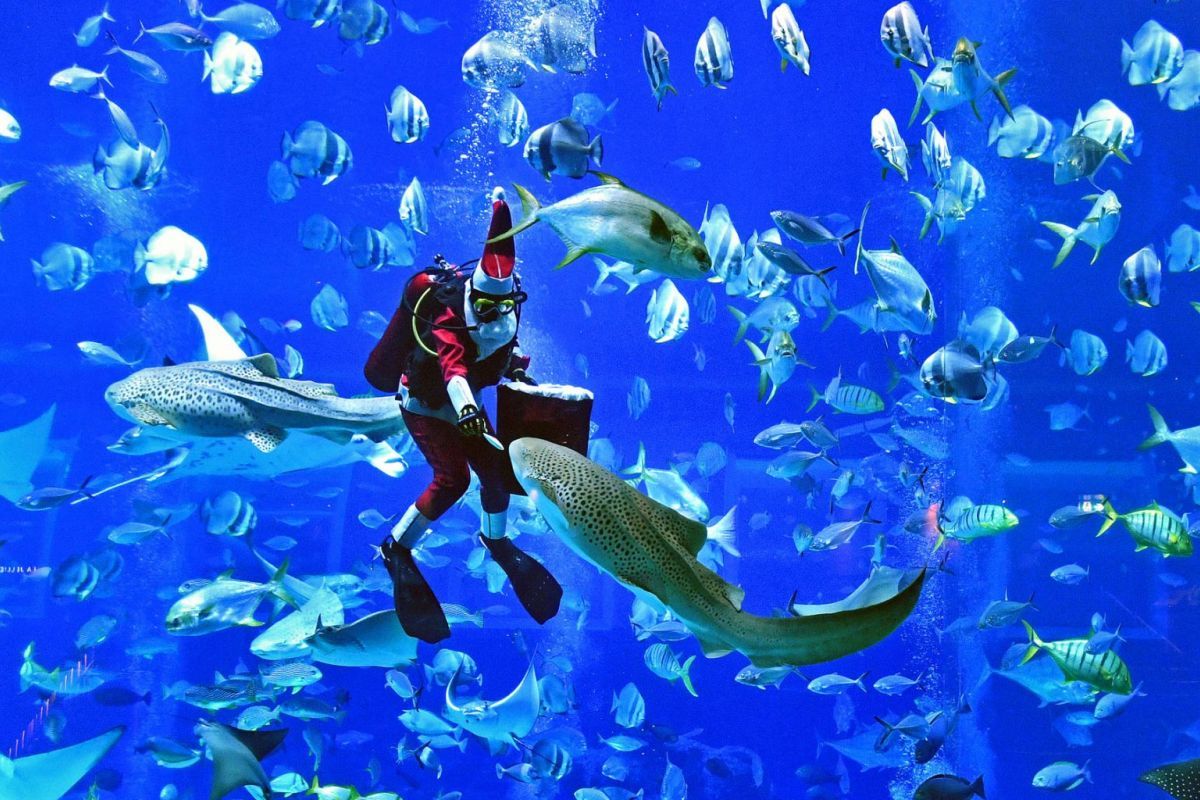Just in time for the holidays, what could be described as a cross between Father Christmas and Aquaman is taking center stage at the Sealife Aquarium in Berlin.
A photo spread released Thursday showed the Jolly Old Elf himself in his trademark red and white apparel with complementary scuba gear feeding some 5,000 grateful creatures with the assistance of an obliging submerged angel.
Annual Tradition
It's been an annual tradition to get Santa Claus out of the comfy confines of his reindeer-driven sleigh, don a tank, mask and flippers and dive into the facility's depths to provide cheer and sustenance for the aquarium's residents. No doubt it's a treat to not only bring in the crowds, but also a chance for the facility to educate the public about undersea life.
The Sealife Aquarium is one of the largest aquatic zoos in Germany as well as one of the oldest. Reportedly constructed in 1915, the space is home to a wide variety of marine life including clownfish, pufferfish, seahorses, sharks and rays. Also thrown into the mix are more terrestrial creatures like caimans and tarantulas.
Adopt-an-Animal Campaign
Santa's annual fish feeding media scrum isn't the only promotion the aquarium undertakes annually. Sealife regularly conducts adopt-an-animal campaigns as a major fundraising initiative, as well as opportunities for folks to sponsor any of the tanks on the premises.
While Santa obviously doesn't make is presence known throughout the year, other public fish-feeding sessions are far more regular. Experienced staff dip into their pails and distribute tasty morsels to hungry sea life every Monday and Thursday afternoons. Folks more into checking out how caimans and crocodiles are feed can check out those activities on Tuesday and Friday mornings.
Sealife also conducts regular guided tours during the day as well as other excursions called flashlight tours in the evening for spectators to discover how more nocturnal life conducts its business. The aquarium also has educational packages cover such topics as animal-human interactions and species preservation.


